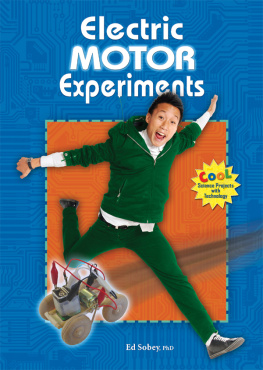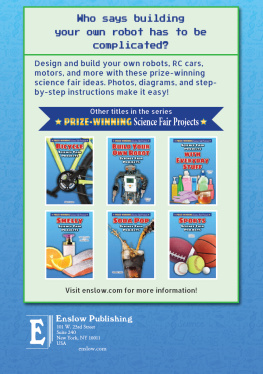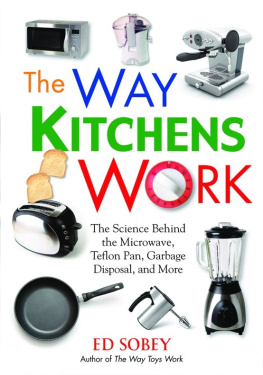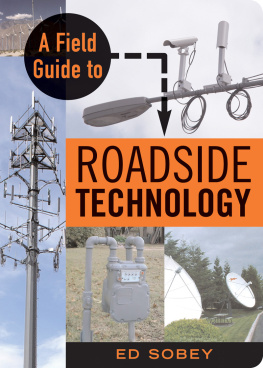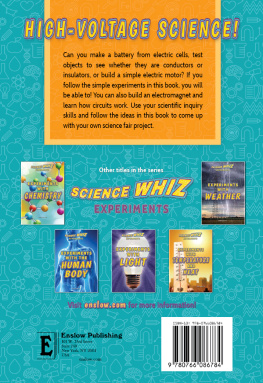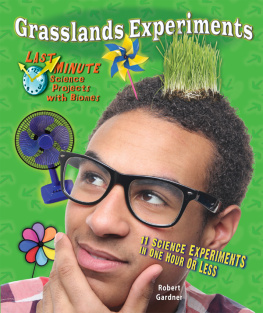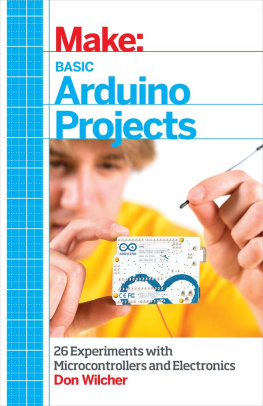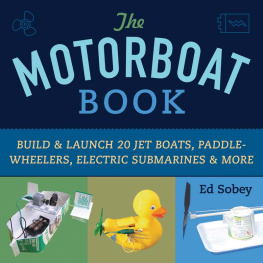Ed Sobey - Electric Motor Experiments
Here you can read online Ed Sobey - Electric Motor Experiments full text of the book (entire story) in english for free. Download pdf and epub, get meaning, cover and reviews about this ebook. year: 2012, publisher: Enslow Publishers, Inc., genre: Children. Description of the work, (preface) as well as reviews are available. Best literature library LitArk.com created for fans of good reading and offers a wide selection of genres:
Romance novel
Science fiction
Adventure
Detective
Science
History
Home and family
Prose
Art
Politics
Computer
Non-fiction
Religion
Business
Children
Humor
Choose a favorite category and find really read worthwhile books. Enjoy immersion in the world of imagination, feel the emotions of the characters or learn something new for yourself, make an fascinating discovery.
Electric Motor Experiments: summary, description and annotation
We offer to read an annotation, description, summary or preface (depends on what the author of the book "Electric Motor Experiments" wrote himself). If you haven't found the necessary information about the book — write in the comments, we will try to find it.
You can find motors in countless household devices. Discover how they work as author Ed Sobey guides young readers through the disassembly and rebuilding of a motor. Make your own motor and improve it for different uses. Many unique experiments include ideas for science fair projects.
Electric Motor Experiments — read online for free the complete book (whole text) full work
Below is the text of the book, divided by pages. System saving the place of the last page read, allows you to conveniently read the book "Electric Motor Experiments" online for free, without having to search again every time where you left off. Put a bookmark, and you can go to the page where you finished reading at any time.
Font size:
Interval:
Bookmark:
Start Your Motors!
How do motors work? Using the experiments in this book, learn how to build and use your own motor. See how motors work in cars and boats! Find out what other cool things motors can do! Some experiments have ideas for a fun science or technology fair project.
This book provides a fun and informative way to introduce young readers to the scientific method, including the use of a log book to record predictions, observations, and results. After working their way through this book, readers will look at the world in a new way saying, What new experiments can I carry out?
About the Author
Ed Sobey, PhD, is a scientist, lecturer, and author. He has directed five museums and has written twenty-five books. He conducts workshops for science teachers and museum staff throughout the world.

Think of all the machines you see that move or move things. Elevators and escalators, automatic doors, some movie screens that move up and down, fans, and computer printers are a few examples. At home, you might have a washer and dryer, blender, or electric toothbrush. All these machines have motors, and most are powered by electricity.
If you want to build something that moves, you will probably need at least one electric motor. This book will show you how to create gizmos that move. Once you understand the basics, you can design and build an endless number of motorized models.
The magic of motors starts when you connect them to a power source. All of the experiments in this book use batteries for power. Do not use any motors that require you to plug them into a wall outlet. Batteries provide plenty of power for the models, and they are safe to use.
Connecting a battery to a motor with two wires rewards you with the high-speed whir of the fast-spinning motor shaft. The whir confirms that energy is flowing from the battery to make the motor spin.
Besides initiating a series of reactions, making the simple connection between the battery and motor also launches you on a quest to find inventive ways to control that connection and to use the output mechanical force. You can make simple switches with stuff you have at school or home to open and complete the circuit. Then you can make a variety of gizmos that you power with electric motors.
Besides reading this book, the best way to learn about electric motors is to experiment with them. Get an inexpensive motor from an electronics or hobby store, science catalog, or school. You can also find motors in old computer equipment and other electronics that people have thrown away. You might find several motors to use inside an old CD player or VCR. Then gather batteries, battery holders, and alligator clip leads for connectors. Ask lots of questions and conduct experiments to find the answers. In your experiments, do not connect anything to an electrical outlet in your home or school and do not directly connect the positive and negative terminals of a battery. Directly connecting the positive and negative battery terminals makes a short circuit (see ) and will quickly ruin your battery.
You can run many great experiments with motors, but to use these in a scientific report or science fair, you need to follow a few guidelines. Conducting a scientific experiment includes making observations, measuring variables, collecting and analyzing data, researching scientific articles, and producing an attractive and easy-to-understand report. Simply making a machine that uses motors isnt science.

Never let a wire touch both the positive and negative terminals of a battery. This is a short circuit. It will quickly ruin the battery.
Start your project by experimenting with motors. Ask yourself questions about how they operate and what they can do. As you learn more, ask better and more detailed questions. Before running an experiment, think of a possible answer, or hypothesis. The experiment can test whether your hypothesis is true or false.
A good question is one that you can answer by running a test and collecting data (numbers). Being able to represent that data in a graph helps people understand what you have discovered. As you conduct experiments, remember to change only one variable at a time. If you change more than one variable at once, you wont be able to tell which one caused the effects you see.
You could experiment with different ways to get the motors motion to power wheels or other parts. If you want to make electric car models, you could power the car with a propeller attached to the motor shaft, or you could attach a wheel directly to the motor shaft. Other options would be to use gears or a belt (such as a rubber band) on the motor shaft to spin the wheels or axles. Each design will operate differently. You could measure how fast each model travels or how much weight each model can pull. As you experiment, you will come up with new ideas to try.
Your first job is to get a notebook in which you can record information about each experiment you conduct. Each entry should have a date so that you can keep track of when you did each experiment. List the materials you use, and keep notes on what you try and what results you observe. Add sketches of designs and circuits that you use. Add photos if you can. You will be able to build on these notes for a long, long time.
Remember the first two rules of science. Rule number one is to stop doing what you are doing whenever you find something interesting. Go explore the interesting thing and see where it leads. Rule number two: Have fun. Science is a fun process of discovery and learning.
The projects included in this book are perfectly safe. However, read these safety rules before you start any project.
- All of the experiments in this book use batteries for power. Do not use any motors that require you to plug them into a wall outlet.
- Do any experiments or projects, whether from this book or of your own design, under the supervision of a science teacher or other knowledgeable adult.
- Read all instructions carefully before proceeding with a project. If you have questions, check with your supervisor before going any further.
- Maintain a serious attitude while conducting experiments. Fooling around can be dangerous to you and to others.
- Wear approved safety goggles when you are doing anything that might cause injury to your eyes.
- Have a first-aid kit nearby while you are experimenting.
- Do not eat or drink while experimenting.
- Always wear shoes, not sandals, while experimenting.
Even though electricity was discovered centuries ago, we are still discovering new things that it can do. Making things move by using electric motors is one of the most common uses of electricity. If you take apart a toy that moves, for example a radio-controlled (RC) car, you will find two motors. One drives the car forward and the other provides steering. These motors, like most motors used in toys, operate with the power from one or several batteries. Any battery that is shaped like a cylinder delivers 1.5 volts, regardless of how large (D cell) or small (AAA cell) the battery is. Connecting two batteries together so that the positive end of one connects to the negative end of the other will double the voltage. This arrangement of batteries is called a series circuit (see ). In series circuits, the total voltage is the voltage of each battery added together. An RC car typically has four batteries connected in series to deliver 6 volts (1.5 volts per battery).
Font size:
Interval:
Bookmark:
Similar books «Electric Motor Experiments»
Look at similar books to Electric Motor Experiments. We have selected literature similar in name and meaning in the hope of providing readers with more options to find new, interesting, not yet read works.
Discussion, reviews of the book Electric Motor Experiments and just readers' own opinions. Leave your comments, write what you think about the work, its meaning or the main characters. Specify what exactly you liked and what you didn't like, and why you think so.

